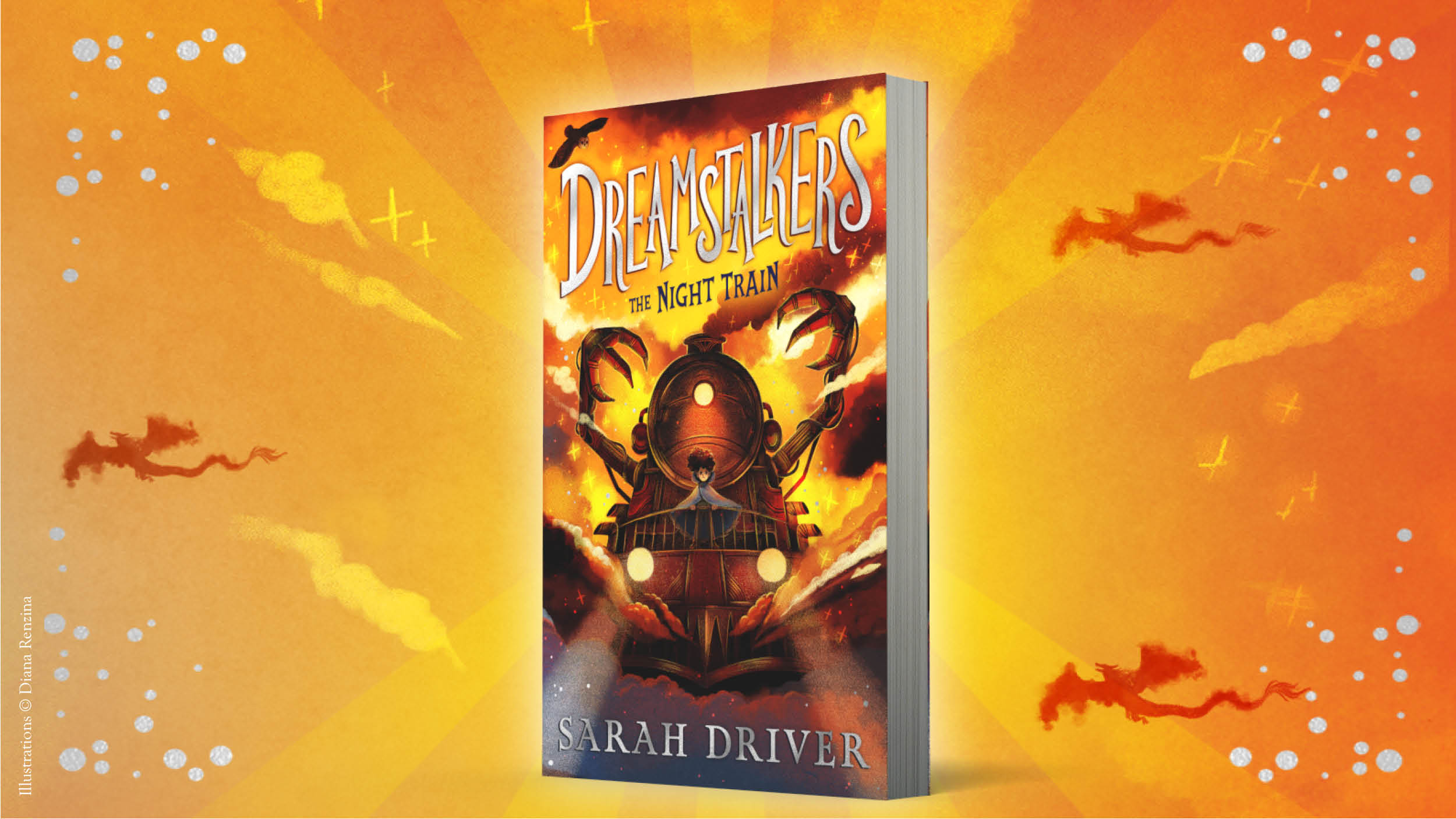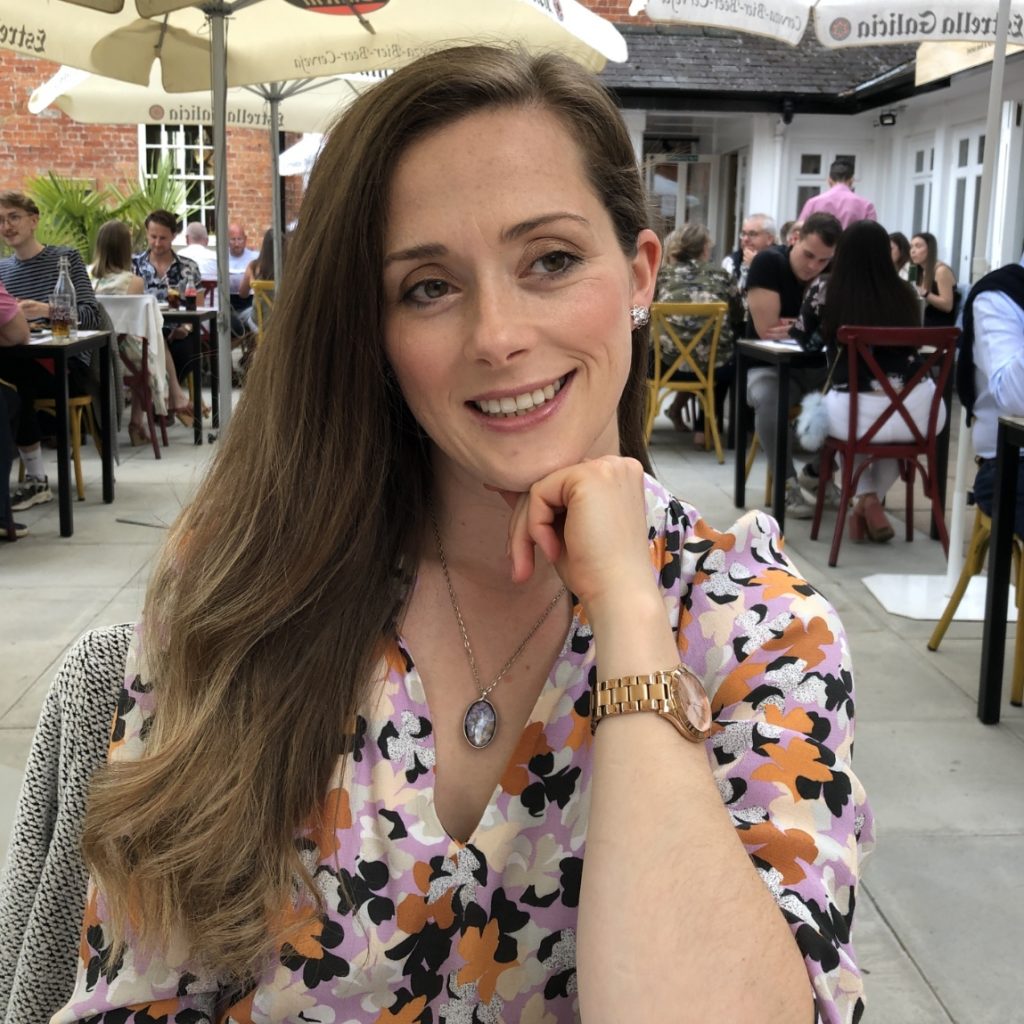Your cart is currently empty!

Dreamstalkers: The Night Train
Dreamstalkers: The Night Train – Q&A and Book Review

Everything changed the day the dreams disappeared… and the nightmares came.
Bea Grimspuddle lives with her mother Ula and her faithful owl, Pip in Thunderheart – hidden in the wild moors. But when dreams disappear and nightmares begin to stalk the lands, the villagers decide to abandon their homes and leave Thunderheart. Growing sick with a mysterious illness, Ula refuses to leave, much to Bea’s despair. As the nightmares grow closer and closer, and Ula’s secrets begin to unravel, a mysterious Night Train sweeps across their homeland, bringing hope and danger in equal measure, flinging Bea into a faraway adventure into the realm of Dreamstalkers.
A truly spellbinding middle-grade adventure from Sarah Driver. Dark, haunting and rich with beautifully crafted descriptions and extraordinary characters, Dreamstalkers: The Night Train will leave you instantly entranced and longing for more.
Reviewed by Krystal McCann
Author Q&A with Sarah Driver
Hi Sarah! Congratulations on Dreamstalkers: The Night Train, your first book in an epic new adventure series! I must admit, I am a huge fan of magical stories full of darkness and adventure and I was totally gripped straight away! We’re so delighted that you are going to be giving us further insight into the world of Dreamstalkers, by answering our questions!
1. First of all, can you give us a brief description of what to expect from Dreamstalkers: The Night Train, without giving too much away?
Thank you so much! Dreamstalkers: The Night Train tells the story of twelve-year-old Bea Grimspuddle and her owl companion, Pip. In the world of Hirathorn, Bea lives in the remote wilds of a rugged moorland settlement called Thunderheart Tor. She longs to become a mage, riding off on adventures, with the power to use wild magic. Instead she is taught that all the magic of Hirathorn resides exclusively with the elites in the faraway city of Silvervein. Everything changes when the dreams disappear, strange shadows are glimpsed and nightmares come walking. Then the Night Train steams across the moors, and Bea is swept into an adventure in the world of the Dreamstalkers.
2. Dreamstalkers is so rich with description and imagery which makes it totally gripping from the start. How do you begin writing? Do you begin with the setting and plot or do the characters come first?
The characters come first, and in this case that included the Night Train! I first scribbled down a page or two about Bea, Ula and Pip about five years ago. All I knew about them at that time was that they lived in a remote setting, Bea was lonely, and (in that early version) Ula was a practising Dreamstalker, who traveled to work aboard a gigantic, dilapidated locomotive called the Night Train. It’s most important to me at first to find the voice, atmosphere and heart of the story. Setting comes soon after, and plot after that. I like to make a lot of notes by hand and make collages. In outlining, drafting and re-drafting, a few things changed. During re-writes, Pip transformed from a fox to an owl, which feels fitting for a story steeped in fantasy and myth. And Bea’s call to adventure follows on the heels of a revelation – the first time she has heard of the elusive guild of Dreamstalkers.
3. Did you always want to be a writer? What were your favourite books as a child?
I mostly remember wanting to be an archaeologist or a teacher! I didn’t realise that being a writer was actually a job. I always was a writer though, from around the age of six. I filled notebooks and diaries with journal entries, poems and stories. I asked my best friend to illustrate my stories and write the blurbs, and I stapled them into ‘books’. I made my first attempt at drafting a novel aged fourteen. My favourite books as a child were usually magical in some way. I loved A Necklace of Raindrops by Joan Aiken and Jan Pienkowski, Spellhornby Berlie Doherty, the Carbonel books by Barbara Sleigh and C.S. Lewis’ Chronicles of Narnia. I vividly remember being introduced to Tolkien’s The Hobbit by a teacher and sitting in bed gripped, horrified and fascinated. I also loved classics like The Secret Garden and A Little Princess by Frances Hodgson Burnett, and Little Women by Louisa May Alcott.
4. The main character, Bea Grimspuddle, is somewhat of a dreamer who is incredibly strong willed and brave. How did you come up with the character of Bea?
Bea appeared with her emotions somehow deeply connected to the wildness and isolation of the setting. She’s deeply connected to nature, her home, and the elements, while also having a restless longing for adventure. I think I got to know her better the more I fleshed out the setting, and vice versa. Even from the very first inkling of the book – the idea of being someone who works in the dreams of more important people and can’t reveal themselves – everything came through the perspective of a rough sketch of Bea. As drafting progressed and I got to know her character, I recognised some elements from my own childhood – for example feeling deeply connected to nature, navigating bullies, and nurturing a burning curiosity that won’t be told ‘no’.
5. Bea lives in a place called Thunderheart, which becomes a treacherous and terrifying place when dreams disappear and nightmares arrive, stalking the land. What gave you the inspiration for such a setting?
During the first full drafting of the story, years after the first spark, I changed Bea’s home from a mountain setting to one I felt more intimately connected to, inspired by Dartmoor in Devon and Brimham Rocks in Yorkshire. A stronger sense of place helped build Bea’s passion for protecting her home and the creatures who share it. This choice made the narrative feel more authentic to me. I found that drawing inspiration from those rocky, windswept landscapes lent a slightly otherworldly atmosphere, and I liked that living somewhere wild and stormy would mean that Bea feels very at home on uneven terrain, in unpredictable weather. I was conscious that Bea and the people of Thunderheart lived in a way that was much simpler than our own modern way of life, and the setting I created also seemed to fit well with that.
6. Throughout Dreamstalkers: The Night Train, Bea goes on an epic journey to save her mother and Thunderheart from the nightmares threatening to destroy her home. What do you think Bea learns about herself in the process?
I think Bea learns that she can let herself soften enough to trust those who deserve her trust, and that she doesn’t have to be self-reliant for absolutely everything. I think she learns to admit that she really wants to have friends, and how to navigate feelings of jealousy. Admitting vulnerability is part of her strength, by the end. Her strength and courage are more genuine by then.
7. You are no stranger to writing incredible fantasy adventures, as seen in The Huntress series! What is the process like when developing a series? Do you plot out the whole story first and do ideas change and develop as you write?
Thank you! I kind of wish I plotted everything out first! Sometimes I wonder if it would save some of the more difficult moments of drafting if I tried to plot it all out, but I’m not sure how well it would serve the story. I do quite like planning loosely, building up a chapter outline into a first draft. This still allows me to work organically, seeing what arises creatively. I will generally have some sort of idea of where a character might end up by the end of a series, either plot-wise or in terms of their character arc, but I won’t typically know much about what the journey is going to look like at the outset. Some ideas massively evolve during the process, others stay almost exactly the same as the original concept. I find that I have to get into the ‘creative zone’ and feel out the story, discovering characters and plot along the way. Even if I try to set out a plan, it will change.
8. You are clearly a passionate writer and have received great praise for your work. What advice would you give to any young person wanting to write?
Thank you so much! I love this question. There are so many things I could say. Hold your writing like a candle flame in your heart and make time to nurture it. Don’t worry about making your writing ‘perfect’ the first time – I didn’t know that published authors didn’t just write a whole book out from start to finish neatly. I didn’t know that sometimes scenes or whole books have been re-drafted many times. I think there’s so much creative freedom in experimentation and play, and giving yourself the permission to be messy and puzzle things out. Try to finish a story – it took me a long time to get over the fear of imperfection and just keep writing to finish a whole draft. Once you have a first draft, you have the bones of a story that you can work on.
9. We know that this is the first book in an epic new adventure series. Can you give us an insight into what we can expect from Bea in the next instalment of the series?
Bea has had a taste of life beyond Thunderheart with the mages, and the curiosity in her heart is full to bursting at the start of book two. Pip and Martha will accompany Bea as central characters again. We’ll also meet several new characters as we get to know the world of Hirathorn more deeply. Expect another fast-paced adventure, more appearances from a bigger cast of the Dreamstalkers themselves, more dragons, more omen birds, more mages from the various different guilds, and even higher stakes.
10. Can you describe Dreamstalkers: The Night Train in three words?
Danger, magic, friendship!

Blog post by
Krystal McCann